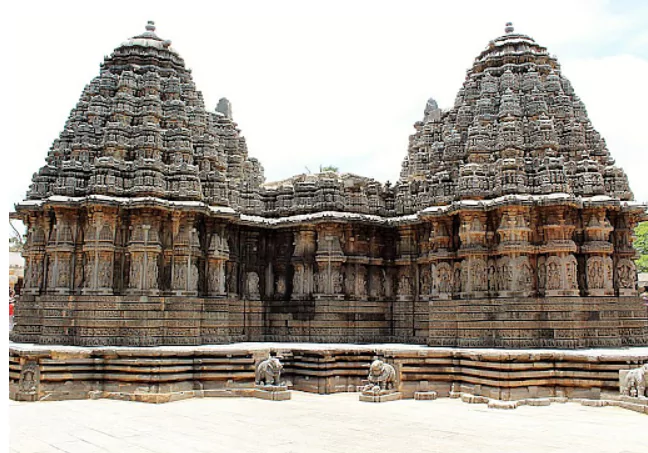Introduction
The Vesara architectural style thrived in the Deccan region of India, recognized for its fusion of Nagara and Dravida styles, earning it the nickname “Hybridised style.” Chalukya and Hoysala rulers patronized this blend, possibly influenced by Karnataka’s geography and dynamic royal initiatives.
Key Features of Vesara Style
- Ornamentation: Chalukyan temples exhibit a distinct indigenous quality in their ornamentation of walls and pillars.
- Transformation of Dravida tower: Chalukyan architecture altered Dravida towers by reducing the height of each storey and arranging them in descending order, embellished with intricate ornamentation.
- Transformation of Nagara tower: Unlike the inclined storeys of Nagara towers, Chalukyan temples feature modifications in the tower’s vertical shape.
Enroll now for UPSC Online Course
Distinctive Features of Chalukya temples
- Two distinctive features of Chalukya temples
- Mantapa: Chalukyan mantapas showcase two types of roofs – domical ceilings supported by four pillars and square ceilings adorned with vibrant mythological depictions.
- Pillars: The finely crafted decorative pillars in Chalukya temples possess inherent artistic value.

Some Famous Temples
- Kallesvara temple, Kukkanur
- Ramalingesvara temple, Gudur
- Mahadeva temple, Ittagi
- Kasivisvesvara temple, Lakkundi
- Brahmadeva temple, Savadi
- Mallikarjuna temple, Sudi
Conclusion
- The Vesara style of temple architecture, blending Nagara and Dravida styles, stands as a remarkable testament to the artistic fusion and cultural richness of India’s heritage, captivating generations with its unique charm and allure.
![]() April 18, 2024
April 18, 2024
![]() 3351
3351
![]() 0
0
